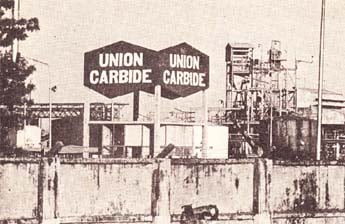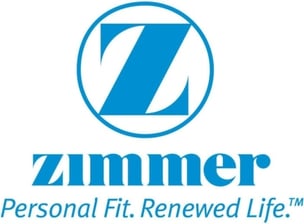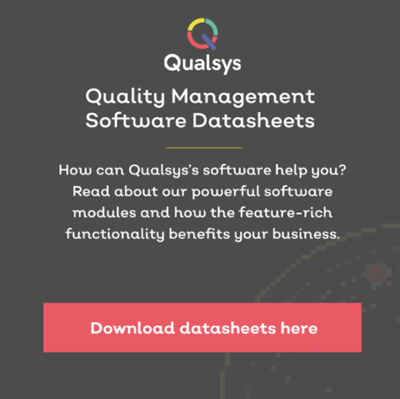Want to contribute to this article?
Business equipment has a life of its own - a start-work date, an identification number, a function, a history, a contract, a need for maintenance, and a retirement date. But many organisations feel like they fail to successfully manage their equipment throughout its lifecycle.
The consequences of poor equipment management are not only costly, but it can be dangerous and damaging to your reputation. Managing equipment in a systematic process will make your organisation more agile, safer and more profitable.
For more streamlined, systematic equipment management, here are seven questions you should ask.
1. What equipment do we have?

The 2015 MP expenses scandal proved why it is essential to always know
what the organisation is purchasing, public or private sector
It is shocking just how many organisations do not keep an updated list of what they own. Even large organisations, who have a sophisticated asset register database, simply fail to register the importance of regularly keeping track of what they have.
Consequences are inevitably costly. Being unable to fulfil an order because you don’t have the equipment to do the job. Buying duplicate items of equipment. And wasting money, time and effort purchasing equipment you do not need.
Organisations that do keep track are leaner, more profitable and more responsive to their customers.
2. How do we know when maintenance is due?
As well as the obvious issues with under-maintenance, there are two critical issues with over-maintenance.
1) There is the obvious additional cost that adds no value. Oniqua, an Australian-based expert in the maintenance of equipment in the oil and gas industry has found that organisations typically spend up to 30% of their maintenance costs on equipment with a zero failure rate.
2) There is evidence that intrusive over-maintenance may actually increase the failure rate and introduce additional risk. Federal Aviation Authority statistics show that:
- Almost 12% of all aircraft accident reports cite a maintenance factor.
- When failure or malfunction of aircraft equipment is part of an accident or incident, one-third of these malfunctions relate to a maintenance error.
- Whenever engine delays are encountered, maintenance error accounts for nearly 50% of the causes.
It is important that organisations understand the balance between over and under maintenance.
3. Do employees know how to properly operate equipment?

Andrew Jones Pies was fined £250,000 for safety offences after a gas explosion
in an industrial bakery oven killed one man and badly injured another
Equipment will inevitably fail if it is not operated properly and the consequences can be much worse than broken equipment.
A tragic example of when improper equipment operation caused a fatal accident was at a Pie firm in West Yorkshire in 2010. Mr. Cole, a Baker, made repeated attempts to light a 30 year-old oven unaware gas was building up to a critical flashpoint inside the baking chamber. When the gas did ignite, the blast blew the oven door off its hinges hitting Mr. Cole.
Preventing fatalities such as this does not only involve training, but also ongoing monitoring. It is important to:
1) find out how your assets should be operated;
2) understand the effects of operating outside of optimum range of operation and;
3) if you can’t operate within the ranges, understand the risks or mitigate the risk.
4. Have we properly managed risk?
Effective equipment management not only manages the operation and maintenance of physical assets, but also manages the risks associated with the ownership and use of the assets. Risk assessment and subsequent management and controls are critical.
A shocking example of unassessed and unmanaged risk is the “Bhopal Disaster” in India in 1984, widely regarded as the world’s worst industrial catastrophe, killing over 4,000 people.

Adopting a systematic approach to risk management minimises the potential for equipment problems with serious consequences. An ISO 31000 based process will guide you through;
- Establish context
- Risk assessment: Risk identification, Risk analysis, Risk evaluation
- Risk treatment
- Monitor and review
5. Is equipment accurately valued?
Consistent accounting policies are essential. This means you must be able to accurately value your equipment on your balance sheet. If you intend to sell on equipment is the fair market value represented in your books? Revaluation of assets is embarrassing and potentially damaging to your share price or ability to borrow.
6. Are we meeting our regulatory compliance requirements?

The FDA has issued a warning to medical device company Zimmer Biomet Holding Inc, who observed unspecified activities that didn't conform with "current good manufacturing practice requirements"
If equipment you use subject to regulatory control it almost certainly has the potential to harm your staff or customers. The Food and Drug Administration in the USA regulate organization using or making Medical Devices. Code of Federal Regulation 21 specifies that you must:
- Establish and maintain equipment maintenance schedules and procedures.
- Conduct and document periodic inspections in accordance with procedures.
- Post any limitations or allowable tolerances visibly close to equipment or make it readily available to persons performing periodic adjustment
Fail to comply and the FDA can shut you down.
7. How much equipment do we actually have?
Another challenge is the sheer volume of equipment organisations manage these days. Lower technology costs mean we all have cars, laptops, smartphones, printers, tablets and more. This equipment is critical if we are to work faster, smarter and compete in a global market, but failure to manage all the equipment results in lost, stolen and unmanaged equipment.
Next steps
Download our datasheet pack to learn how to manage equipment, assets, risks and more with our quality management software:








Share your thoughts on this article